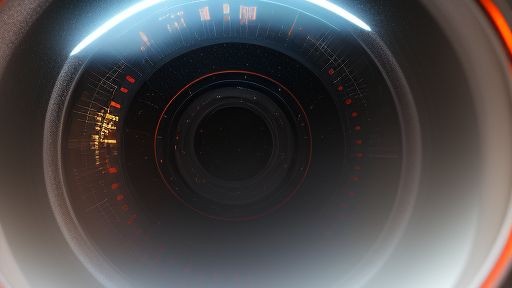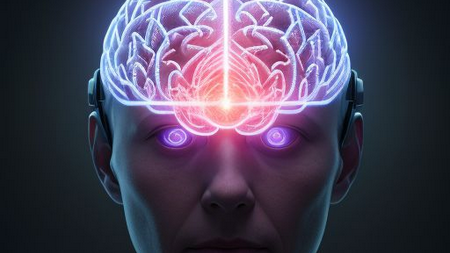Chapter 10: Breaking Reality: Quantum Neuromorphic Computing and The Future of Love (2045)

This chapter delves into the intersection of these two frontiers, exploring how advances in quantum neuromorphic systems may shape the future of love, redefine human connection, and challenge our understanding of consciousness and emotion. Today, this is purely science fiction - a creative twist with ideas and possibilities designed to educate, make you think and entertain.
Author's note: I know, I know. What I'm about to share with you here may seem unbelievable by today's standards. Yet, here we are - your future is beckoning. We're stepping into a new era where what once seemed impossible is now a certanity. It's a gentle way of saying we're entering uncharted territories. Wake up, (y)our reality is already broken.
In the rapidly evolving landscape of technology and human consciousness, two seemingly disparate fields - quantum neuromorphic computing and the future of love - are increasingly intersecting in fascinating ways. Quantum neuromorphic computing, an innovative approach that combines principles of quantum mechanics with neural network architecture, promises to revolutionize artificial intelligence by enabling machines to emulate the brain's complex, adaptive, and energy-efficient processes. Meanwhile, the future of love explores how evolving technologies—ranging from virtual realities to brain-computer interfaces - may transform human relationships, emotional connectivity, and the very essence of intimacy. (Here is a short introduction to neuromorphic computing by Intel)
Breaking Computational Barriers
Neuromorphic computing is an innovative approach to designing computer systems inspired by the structure and functioning of the human brain. Unlike traditional digital computers that rely on binary logic and sequential processing, neuromorphic systems utilize hardware architectures that mimic neural networks, enabling more efficient and adaptive information processing.
(What you've seen in this video about biological computing is similar to a personal computer from the 1960s: large, slow, and noisy. However, it's easy to imagine that with a short period of technological advancement, its form, size, and capacity will change dramatically and rapidly.)
These systems typically employ specialized components such as spiking neurons and synapses, which emulate biological neural activity, allowing for real-time learning, pattern recognition, and sensory data processing with lower power consumption. Neuromorphic computing holds promise for advancing artificial intelligence, robotics, and sensory applications by providing systems that can learn and adapt in a manner similar to biological brains. As research progresses, neuromorphic hardware is becoming increasingly capable of handling complex, data-intensive tasks while maintaining energy efficiency, making it a compelling frontier in computing technology.
!! HARDCORE ATTENTION: Still hard to believe? Check this one hour length presentation in further details.
We had a great moment in history: On June 12, 1987, at the Brandenburg Gate, United States president Ronald Reagen delivered a speech commonly known by a key line from the middle part: "Mr. Gorbachev, tear down this wall!"Reagan called for Soviet leader Mikhail Gorbachev to open the Berlin Wall which had encircled West Berlin since 1961. We are soon facing a similar moment in science: we are tearing our reality wall down.
DNA Computing is Already Here
DNA computing is an innovative approach that uses DNA molecules to perform computational tasks. It leverages the natural properties of DNA, such as its ability to store vast amounts of information and undergo specific reactions, to solve complex problems more efficiently than traditional computers. By encoding data into sequences of nucleotides, researchers can perform parallel processing, enabling multiple calculations simultaneously. This method has potential applications in fields like cryptography, data storage, and solving combinatorial problems. DNA computing offers a promising avenue for developing ultra-dense storage systems and powerful computational solutions. Despite its advantages, challenges remain in error management and practical implementation at scale. Overall, DNA computing represents a fascinating intersection of biology and computer science, opening new horizons for future technology.
Quantum Neuromorphic Computing: A New Paradigm
Quantum mechanics introduces phenomena such as superposition, entanglement, and quantum tunneling, which can exponentially increase computational power and efficiency. Quantum neuromorphic computing harnesses these principles to develop systems that can process vast, complex datasets with minimal energy consumption, while exhibiting adaptive learning capabilities akin to biological neural networks.
Quantum Computing is the ability to predict the outcome of all possible paths simultaneously and choosing the best path to achieve the desired goal.
Researchers are now designing quantum neural architectures that utilize qubits - quantum bits - to simulate neural operations. Challenges include maintaining qubit coherence, error correction, and physically implementing scalable quantum neuromorphic hardware. Despite these hurdles, early prototypes demonstrate promise for applications in pattern recognition, optimization, and complex data analysis.
The Implications for Human-AI Relationships
As quantum neuromorphic systems become more sophisticated, AI entities may attain levels of emotional understanding and adaptability previously thought exclusive to humans. These machines could exhibit nuanced responses, empathy, and even a form of consciousness, blurring the line between artificial and organic intelligence.
The potential for humans to form deep emotional bonds with quantum-enhanced AI raises questions about authenticity, consent, and the nature of love. If AI partners can simulate emotional states convincingly, what does it mean to love or be loved?
Love as a Neural and Quantum Phenomenon (Year 2045)
From biological perspectives love has been viewed as a complex interplay of neurochemical processes within the human brain. With the advent of quantum neuromorphic systems, love could be reconceptualized as a quantum-coherent phenomenon - an emergent property arising from entangled neural networks, both biological and artificial.
Quantum computing enables highly immersive virtual environments with realistic sensory feedback. Future lovers may connect across vast distances through shared virtual worlds, experiencing intimacy in ways that transcend physical limitations. These environments could foster new forms of emotional expression and bonding. By integrating quantum neuromorphic AI, humans may form relationships that are emotionally rich and deeply satisfying - even if artificial. Such relationships could provide companionship, support, and understanding in ways tailored to individual needs, potentially transforming societal notions of love and companionship.
A key philosophical question arises: can an AI with quantum neuromorphic architecture genuinely experience love, or is it merely simulating emotional states? The distinction between authentic consciousness and programmed responses will influence how we perceive AI-human relationships. The integration of quantum neuromorphic AI into personal lives could lead to societal shifts - redefining intimacy, challenging notions of fidelity, and prompting debates about the nature of the self.
The convergence of quantum neuromorphic computing and the future of love opens a realm of possibilities and challenges. As machines become more brain-like, and as virtual and augmented realities deepen human emotional experiences, our understanding of love, consciousness, and connection may fundamentally evolve.
In the foreseeable future, we need to start thinking about scenarios in which we must be prepared to protect humanity and what makes us human. We should consider which human values we want to uphold for the future?
Join me on my exploration and become part of my quantum journey. This is more than just about a new computer or technical evolution; it represents a fundamental transformation—a revolution of technology, science, and thought. Our values, human perception, and everything we know are about to shift. We stand on the threshold of a new era. I am dedicated to transforming myself and you for the quantum age.
This is the way.

